Boning Up On The 1933 Cleveland Bulldogs
There have been several Cleveland football teams that used the Bulldogs name. One played in the NFL from 1924 to 1927, winning the 1924 championship. Another was a professional football team that took the field during the 1933 season. They were supposed to play a few NFL teams that year but mostly played teams a step below the NFL and a step above semi-pro. While the 1933 Bulldogs had success on the field, they struggled at the gate, shut down after the season, and are remembered today for their uniforms, unlike any worn before or since.
I've written about ugly uniforms in the past, especially the uniforms of the 1930s that surpassed all other decades for ugliness. I've also recognized Stanford's 1921 uniforms as the ugliest.
Football teams like the Cleveland Bulldogs regularly teetered on the brink of bankruptcy. They were poorly financed and played other teams in similar or worse circumstances, with ticket sales being their primary revenue source. Visiting teams traveled to games based on a guaranteed fee that paid their travel expenses and a share of the gate, a portion of which they split among the players. Everyone made more money with higher attendance, so teams sometimes relied on gimmicks to attract fans. They also shifted the games to smaller, less expensive stadiums at the last minute if the advanced ticket sales did not support their bigger stadium aspirations.
Seeking publicity to attract fans to their games, the Bulldogs wore all-black uniforms with phosphorous-white skeletons painted on the front. The uniforms were supposed to intimidate opponents and amuse fans, especially for the night games, which comprised most of their schedule.
The uniforms did not help attract crowds. The Bulldogs' first scheduled game was supposed to occur on October 4, 1933, at Cleveland's 78,000-seat Municipal Stadium against the Detroit Indians. The Indians had been told to expect 10,000 fans for the opener, but when they took the field for warmups, there were only a few hundred in the stands, leading the Bulldogs to cancel the game to avoid having to play the Motor City gridders. They shifted future games to Luna Park when the ticket demand proved insufficient.
The Bulldogs roster included players from Cleveland and the surrounding area. Most had played for Ohio State and the smaller schools in Ohio; a few had a few games of NFL experience. Howard Kriss, a former Ohio Stater, and their player-coach, was among the NFL alums, having played in two games. Otto Vokaty, the Bulldogs fullback, played in nineteen games in four NFL seasons, including one with the Chicago Cardinals in 1933.
Among their opponents in 1933 were the Columbus All-Stars, Jamestown Liberties (NY), Dayton Kesslers, and the Nashville-based National Elites, an all-Black team. The Dogs finished with a 7-1-1 record, and like many teams and players that came and went in those days, they are entirely forgettable except for their uniforms.
The uniforms might have made more sense with a team nickname other than Bulldogs, but probably not. They were simply bizarre, and while they gained nationwide publicity, they did not increase the number of paying fans, which may have led to local fans not taking the team seriously. Either way, the Bulldogs did not put enough meat on their financial bones, so the owner buried the team after its inaugural season.
Football Archaeology is a reader-supported site. Click here for options on how to support this site beyond a free subscription.


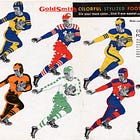

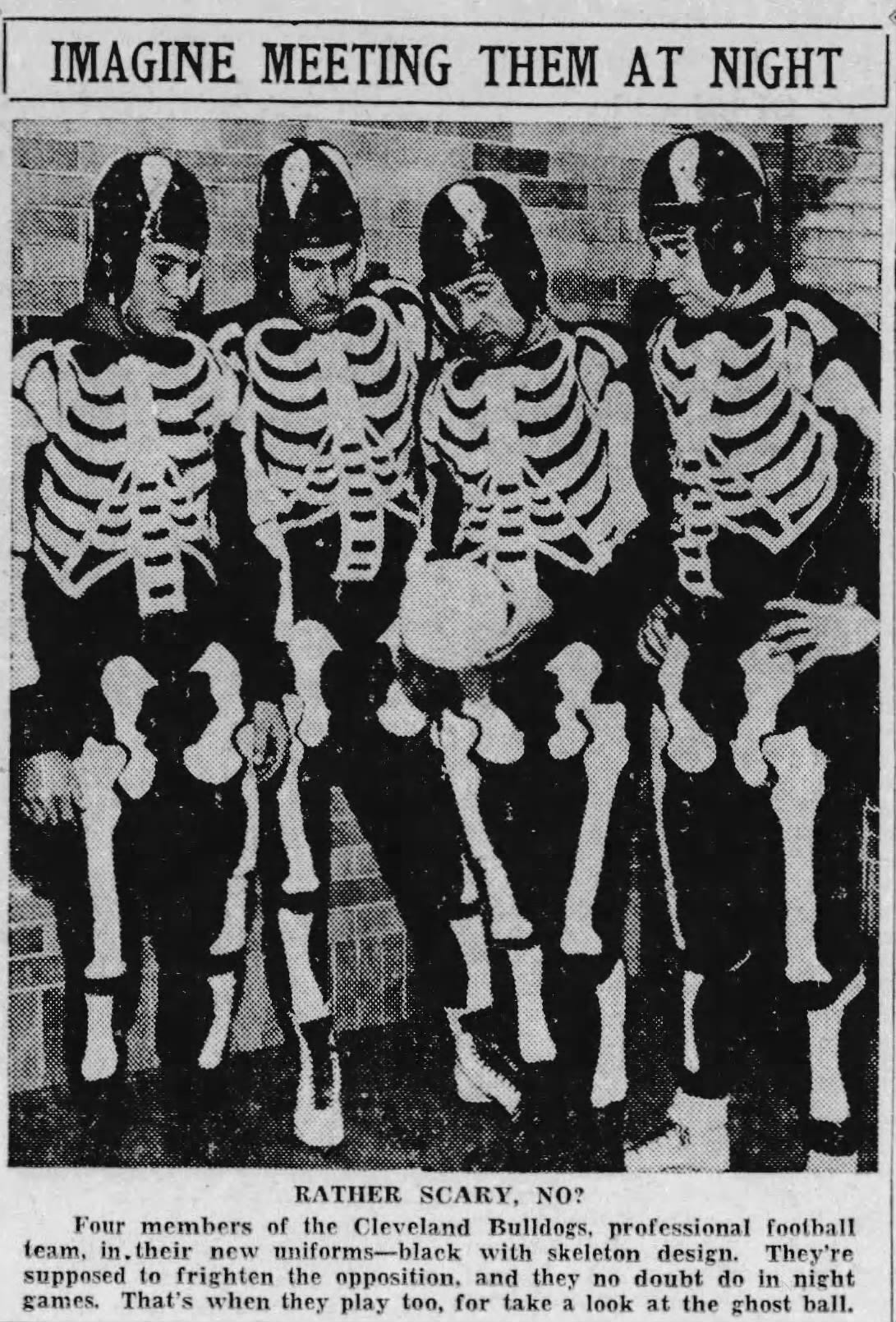
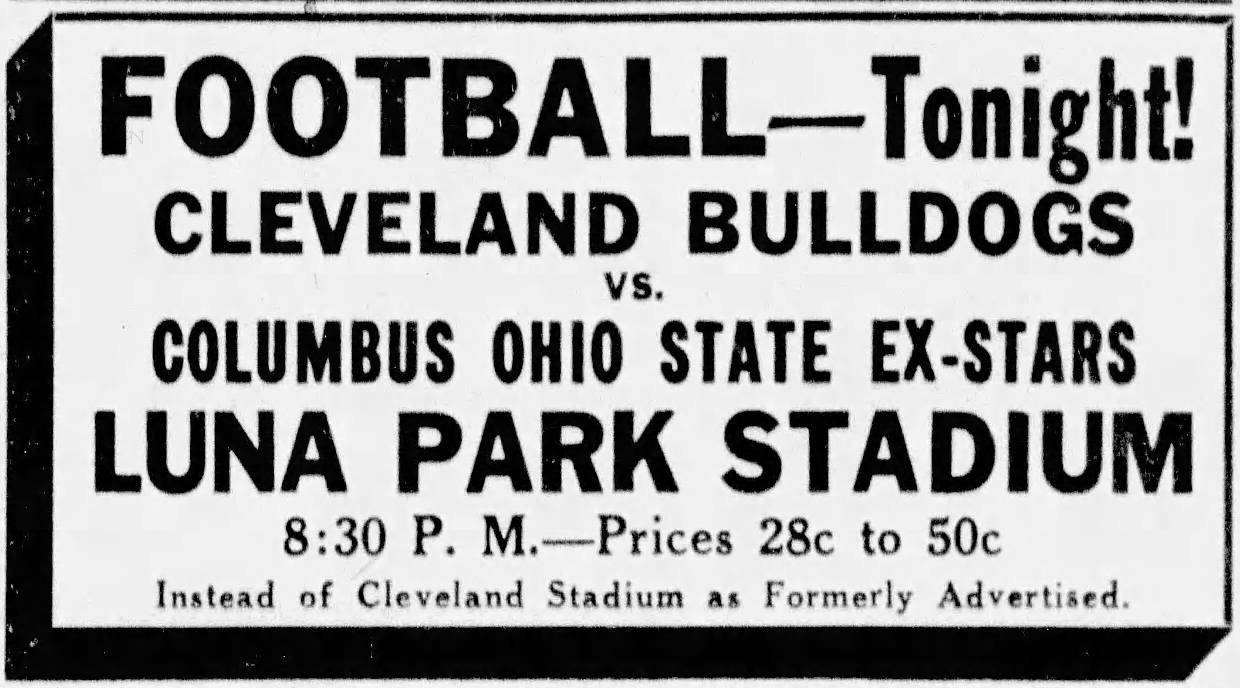

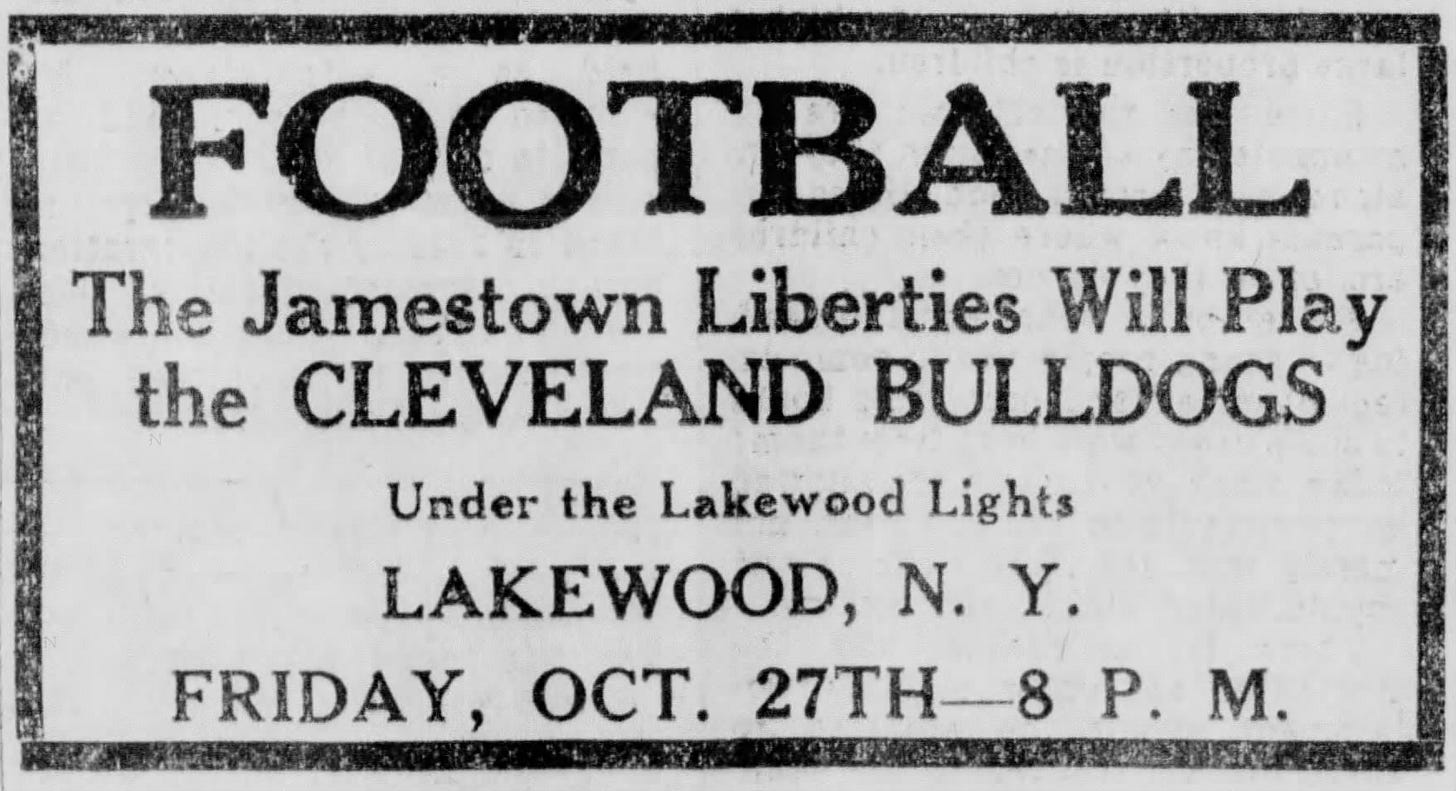
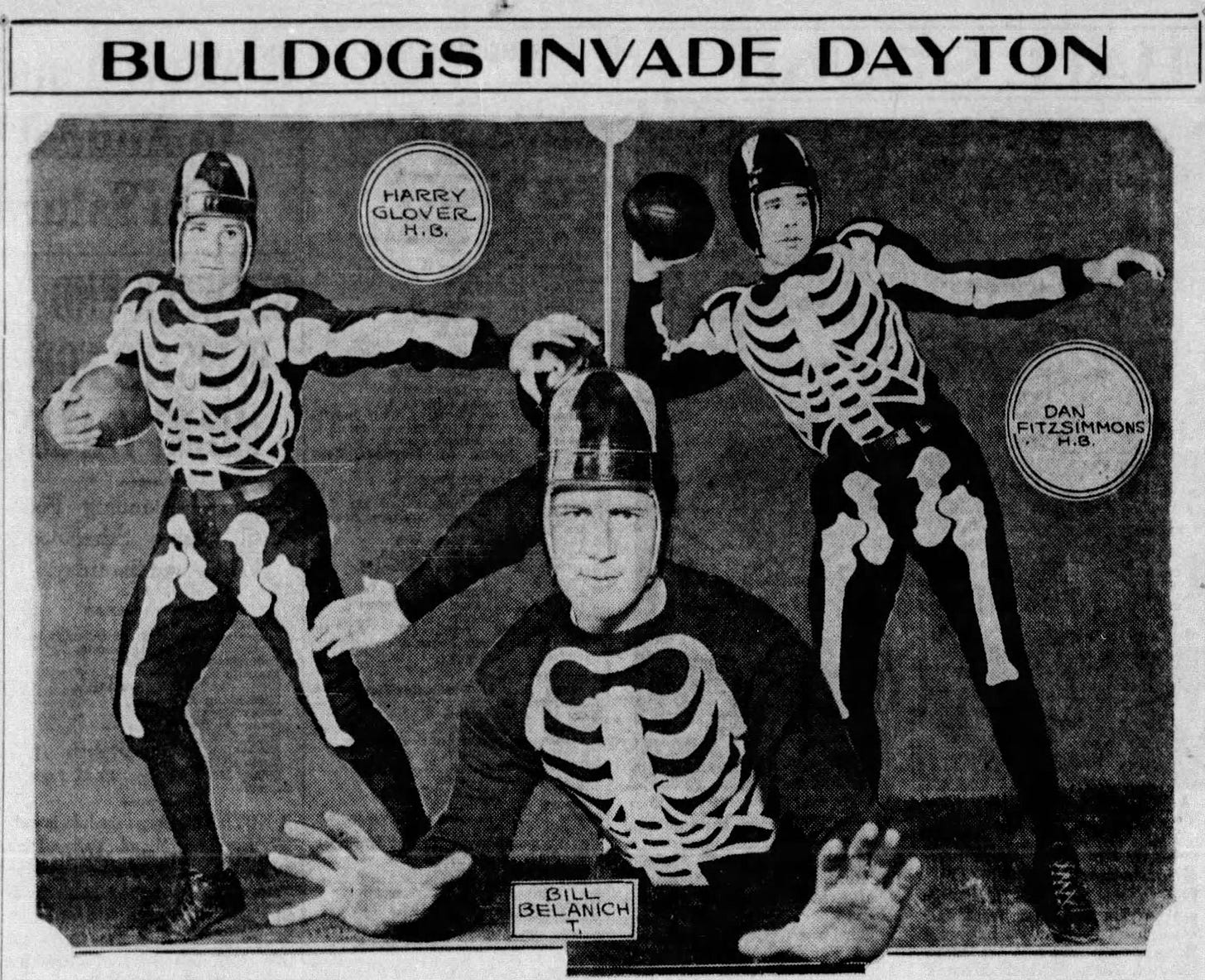
Fascinating. I am glad you "boned" up on the history of this squad. Quite to unique look indeed!